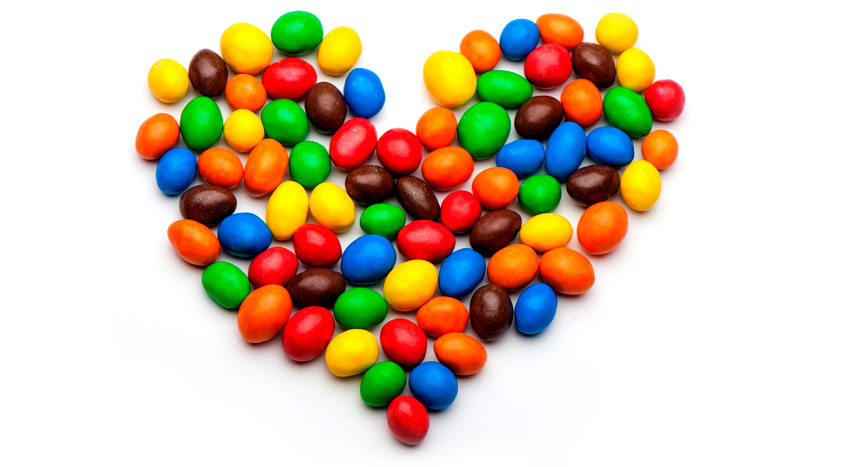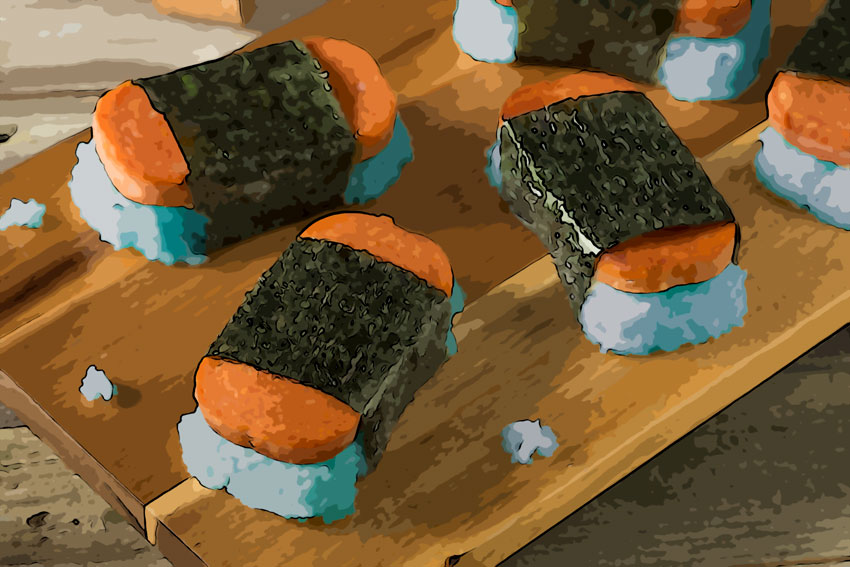Color Matters: The Body: Color & Food Matters

A few years ago, the makers of "m & m's," an American candy which contains an assortment of different colored chocolate sweets, have added a new color to its candy bag: Blue. Blue ? Why Blue? Although they reported that this was the result of a vote by m & m's fans it raises a few questions. It may very well be the last color left in the bag after the novelty wears off.

Of all the colors in the spectrum, blue is an appetite suppressant. Weight loss plans suggest putting your food on a blue plate. Or even better than that, put a blue light in your refrigerator and watch your munchies disappear. Or here's another tip: Dye your food blue! A little black will make it a double whammy.

Blue Rice
What you see above is a delicacy prepared for the annual food party held at the end of the author's color course at the University of Hawaii. It's "musubi", consisting of rice, a filling and "nori" a seaweed wrapper. Traditionally it's Japanese but very popular in Hawaii in it's natural state. In case you're wondering what the pink stuff is, it's spam. If you want to create your own dyed food,use only natural "food coloring" purchased in a grocery store. Other coloring agents are toxic.
Dramatic results can also be achieved by using a blue light bulb for your dining area.
Blue food is a rare occurrence in nature. There are no leafy blue vegetables (blue lettuce?), no blue meats (blueburger, well-done please), and aside from blueberries and a few blue-purple potatoes from remote spots on the globe, blue just doesn't exist in any significant quantity as a natural food color.

Color and Food
Consequently, we don't have an automatic appetite response to blue. Furthermore, our primal nature avoids food that are poisonous. A million years ago, when our earliest ancestors were foraging for food, blue, purple and black were "color warning signs" of potentially lethal food.
Color and the appeal of various foods is also closely related. Just the sight of food fires neurons in the hypothalamus. Subjects presented food to eat in the dark reported a critically missing element for enjoying any cuisine: the appearance of food. For the sighted, the eyes are the first place that must be convinced before a food is even tried. This means that some food products fail in the marketplace not because of bad taste, texture, or smell but because the consumer never got that far. Colors are significant and almost universally it is difficult to get a consumer to try a blue-colored food -- though more are being marketed for children these days. Greens, browns, reds, and several other colors are more generally acceptable, though they can vary by culture. The Japanese are renowned for their elaborate use of food colorings, some that would have difficulty getting approval by the Food and Drug Administration in the United States.

Colorful Fruites and Vegetables
Toss some cooked spaghetti noodles with diluted blue food coloring or cook the noodles in blue colored boiling water.(Note: Use only "food coloring" purchased in a grocery stores for these recipes. Other coloring agents are toxic). Imagine what you can do to the sauce. Don't forget to add a few blue m & m's for garnish.
